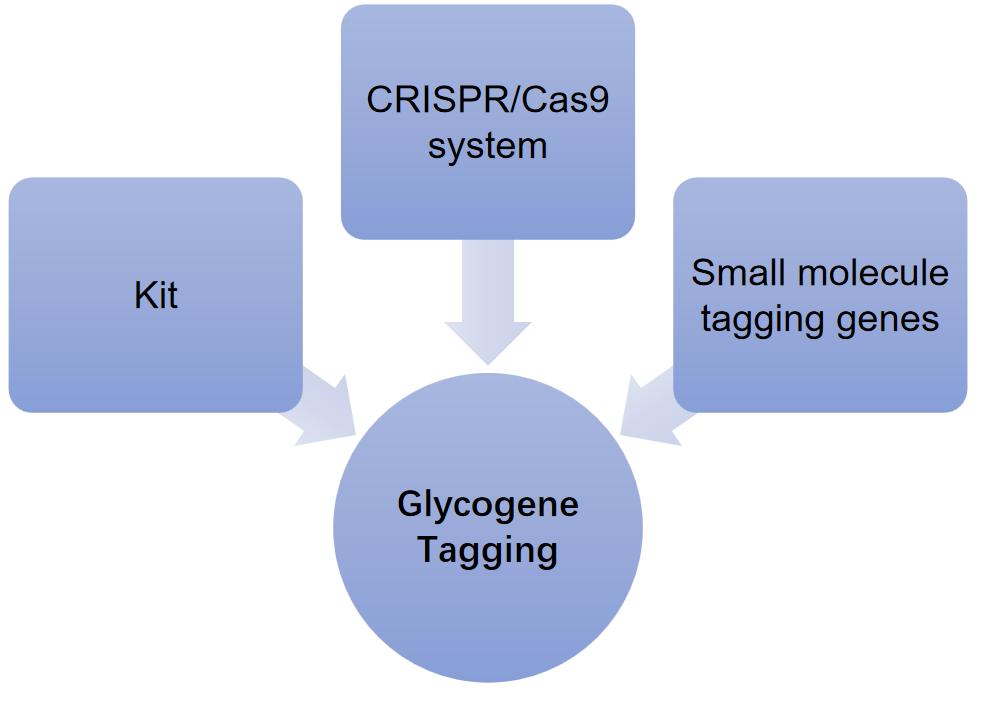



Glycogene tagging is usually used to test the success of recombinant DNA vector transformation or to test the localization of the target gene in cells or tissues. Commonly used marker genes are some antibiotic resistance genes. For example, after combining a plasmid with a resistance gene and foreign DNA fragments to form a recombinant plasmid, then is transferred into the recipient cell. It judges whether the recipient cell has acquired the target gene according to whether the recipient cell is resistant. When recipient cells are grown with selective media, recipient cells that survive the medium can be considered successful in foreign DNA. Different glycogene tags have different uses, which facilitate the development of glycogenomics. Glycogene tagging has broad applications in general genome engineering, protein production, and immune cell therapy.
 Fig.1 Gene tagging strategy at pGAPDH locus. (Xiang, et al., 2019)
Fig.1 Gene tagging strategy at pGAPDH locus. (Xiang, et al., 2019)
The development of glycogene tagging has facilitated the expression of glycogenic diseases and cell lines, CD BioGlyco provides efficient glycogene tagging services. The methods we provide have been repeatedly validated for different targets and target genes and provide you with accurate and reliable tagging services.
 Fig.2 Classification of technical approaches to glycogene tagging. (CD BioGlyco)
Fig.2 Classification of technical approaches to glycogene tagging. (CD BioGlyco)
CD BioGlyco has always adhered to the client-centric principle and developed an advanced Glycogenomics Platform. We have already had many successful analysis cases and won unanimous praise from clients worldwide. In addition, we provide precise Glycogene Knockout/Knock-in/Knockdown/Overexpression Services. Please feel free to contact us if you are interested in our services and have any questions.
Reference:
